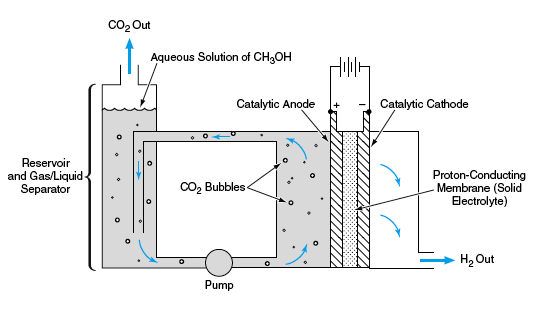|
If you enjoy this FREE service, take
individual action by clicking on the donate button. We
are a 501 (C)3 Non Profit Institute and your donations are fully
deductible to the maximum allowed by law. Your generous support
makes this free service possible. THANK YOU!
|
|
|
To begin, please note that we have a Call
for Abstracts going on for the upcoming COFE12 (Twelfth
Conference on Future Energy) happening this August, 2020 in
Albuquerque NM. Please see www.futurenergy.org for
details and send in a title, abstract, and bio if you
want to present a slideshow for 45 minutes.
Also, if
you are interested, I’ll be presenting at the 2020 Laughlin UFO
Mega Conference this coming February 15-22, 2020. My eight (8) minute
preview is online and the conference URL is https://www.laughlinufomegaconference.com/ .
Why attend a UFO conference? Besides my recent experience being
interviewed for the Integratron episode
of Ancient Aliens this month (History Channel
show), and the Navy’s release of the now famous “tic-tac” UFO
videotape, a new book is out this month called “INTERSECT:
A Former NASA Astronomer Breaks His Silence About UFOs” .
Marian Rudnyk was a NASA JPL scientist who discovered original
film canisters of the Gemini mission with anomalous images on
them and now published them. IRI looks for the technology
spinoffs that can result from such events, as explained in my
ten (10) minute Citizen’s
Hearing testimony at the National Press Club
a few years ago . UFOs are centuries ahead of us in
propulsion and energy generation.
This
month our first story is a game changer for battery energy
storage since a new type, called the “proton battery”, is poised
to replace the lithium-ion batteries if everything goes as
planned. With a reversible fuel cell, protons are recovered
(hydrogen ions) in solution and recombined with oxygen from air
to generate power. Developed at RMIT University, it has been
featured in NASA’s Tech Briefs this month.
Our
Second Story is really about a multi-company development of
airships that are solar powered and travel at around 50% of the
speed of a jet but use only about 8% of the fuel! Though
Varialift is featured in this story, other firms are further
ahead, nearing commercialization, so check out the related
stories which are quite exciting.
The
Third Story shows the rising importance for investment firms of
carbon-free nuclear energy for combatting climate change, even if
the concept involves nuclear fusion and it is still in a research
and development stage. Hopefully radiation-safe thorium reactors
will also attract large scale investment in this country as well.
In this case, Bill Gates has funded the Jeff Bezos energy
startup, General Fusion, to begin construction on a demonstration
fusion plant. We also again recommend comparing with the Related
Story about the longest lasting fusion experiment to date with an
existing fusion reactor.
Our
Fourth Story brings back to the limelight the benefits of
methanol, which now is being used to make hydrogen at NASA’s Jet
Propulsion Lab (JPL). Hopefully we will see more vehicular usage
of hydrogen fuel as a result, since the whole cycle can be made
to be environmentally friendly.
Talking
about the environment, our FE eNews would not be complete without
a mention in our Fifth Story of a new method for capturing the
most dangerous atmospheric gas: carbon dioxide. Since our earth
is now experiencing a 40% increase in the CO2 level (at 411 ppm),
above the maximum it has ever seen in 400,000 years (290 ppm),
capturing carbon is a high priority, as the Norwegian University
Of Science And Technology realizes. An usual polymer membrane
which is relatively inexpensive, has demonstrated its usefulness
in separating gases, possibly on a large scale.
|
|
1) Environmentally Friendly Rechargeable Proton
Batteries
|
|
This battery could replace lithium-ion batteries
to power homes, vehicles, and devices..
|
NASA
Tech Briefs, December 2019
The
proton battery uses a carbon electrode as a hydrogen store,
coupled with a reversible fuel cell to produce electricity. The
carbon electrode plus protons from water give the proton battery
its environmental and energy advantages. Carbon is abundant and
inexpensive compared to both metal hydrogen-storage alloys, and
the lithium needed for rechargeable lithium ion batteries.
During
charging, the carbon in the electrode bonds with protons
generated by splitting water with the help of electrons from the
power supply. The protons are released again and pass back
through the reversible fuel cell to form water with oxygen from
air to generate power. Unlike fossil fuels, the carbon does not
burn or cause emissions in the process.
Related Article
Soild State batteries
breakthrough
|
|
2) A Solar Powered Airship Built To Transport Cargo
More Greenly
|
|
|
|
New
Scientist Magazine, December 2019
A
solar-powered airship being built by UK-based firm Varialift
Airships could eventually be used as a low-emissions way to
freight cargo internationally. On a transatlantic flight between
the UK and the US, the airship would use 8 percent of the fuel of
a conventional jet aeroplane, says Varialift CEO Alan Handley.
Airships –
lighter-than-air vehicles that rely on gas to lift them into
flight .
Zeppelins could make a comeback with this
solar-powered airship cargo mover
All-electric commercial seaplane takes to the air
for the first time
Can NASA’s experimental electric airplane, the
Maxwell X-57, save the planet?
Airlander 10: prototype of world's longest
aircraft retired
|
|
|
3) Bezos-Backed Fusion Energy Startup Raises $65
Million
|
|
|
|
Business
Insider, December 2019
General
Fusion, an energy startup backed by Jeff Bezos, just closed a $65
million funding round, led by the Singapore-based investment firm
Temasek. The company plans to use the funds to build a
demonstration power plant to test its fusion technology on a commercial
scale.
General
Fusion is among a handful of fusion startups that have been backed
by prominent venture capital funds, such as Bill Gates'
Breakthrough Energy Ventures. If successfully commercialized,
fusion could provide a clean source of energy without many of the
drawbacks of nuclear fission, like the production of hazardous
waste.
|
|
4) Making Hydrogen by Electrolysis of Methanol
|
|
|
|
NASA's Jet
Propulsion Laboratory, Pasadena, California
Scientists
at NASA's Jet Propulsion Laboratory are developing apparatuses for
electrolysis of methanol to produce pure hydrogen for use at
industrial sites, in scientific laboratories, and in fuel cells.
The state-of-the-art onsite hydrogen generators now in use are
based on electrolysis of water to produce hydrogen, with oxygen as
a byproduct that has no commercial value in this context. The
developmental methanol electrolyzers consume less than half the
electrical energy of water electrolyzers in producing a given
amount of hydrogen. Even when the cost of methanol is included, the
cost of producing hydrogen by electrolysis of methanol is still
only about half that of producing hydrogen by electrolysis of
water.
|
|
5) A Surprising Substance May Be A Key To Capturing CO2
in the Atmosphere
|
|
|
|
Wetting a
Polymer Membrane Improved Its Ability to Capture CO2 Polymers are
relatively inexpensive and easy to make. Many researchers therefore
regard them as promising candidates for separating different gases
on the large scale that will be needed. This particular polymer
bears the name poly[tert-butylstyrene-b-(ethylene-alt-propylene)-b-(styrene-r-styrenesulfonate)-b-(ethylene-alt-propylene)-b–tert-butylstyrene].
Fortunately, someone gave it the nickname TESET instead. The
material is already in commercial use and is therefore readily available.
|
|
Sign up for our newsletter here
Check out our Social Media pages
below
|
|
|








